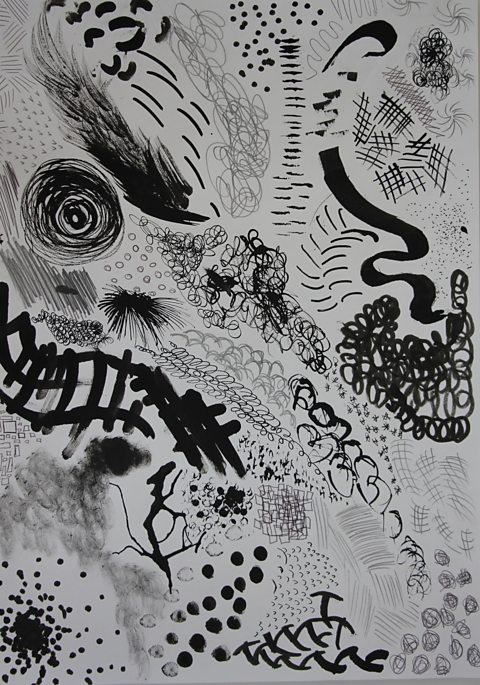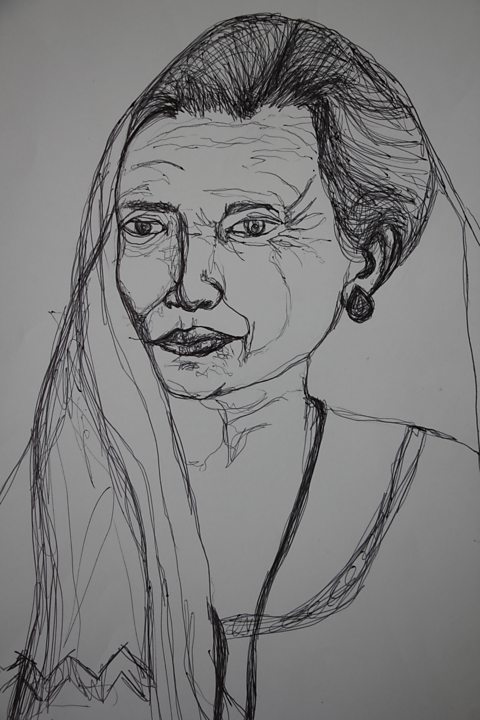Drawing techniques

Mark making describes the different lines, dots, marks, patterns and textures created in a drawing. It can apply to any drawing materials.
It can be loose and expressive or controlled and neat. The results will depend on your choice of media, tools and techniques.
Experiment by exploring different materials and by creating marks in different media. A variety of found objects can be used to create textures when mark making. For example a toothbrush, twig or cocktail stick dipped in ink can create a variety of textures and marks. This will give very different results to work made using pencils and biros.
Upside down drawing
Observational drawing

Anything can be drawn from observation, including objects and still life arrangements, figure and portrait studies, landscapes and other realistic views. You can draw in a variety of styles and with a range of media, processes and techniques.
By looking continually from what you are drawing to the piece of paper and back again you will be able to draw far more accurate than if you are trying to imagine or remember your subject. You will be able to concentrate on key features and record details of shape, proportion and tone. By doing this you will draw what you actually see rather than what you think you see.
Repeated observational drawing will give you an even better understanding of your subject. Drawing from different viewpoints, in different conditions and using different media will all reveal different features.
Composition

Composition is how a drawing is arranged. Consider where to position shapes and lines on the page. Think about the focal point and use contrast, positioning and size to draw attention to it.
Use pencil very lightly when you start to sketch out your composition so any mistakes can be rubbed out.
Line drawing

A contour drawing uses the outline of shapes to show the subject. It is made up entirely of lines, with no shading or tones.
Continuous line drawing is a similar technique, however there must be continuous contact between the drawing tool and the surface that is drawn on. This technique helps you concentrate on varying the weight of line produced by changing the pressure you apply while drawing.
Look carefully at what you are drawing. Consider form, shape, proportion, space and detail without taking your pen off the paper.
Timed studies are a useful way to concentrate on the key features of your subject. Experiment by completing a study in two minutes, then five minute and then ten minutes. Look at the results and decide if they really reflect your subject. This can help you look closely at your subject matter and be more critical of your work.
